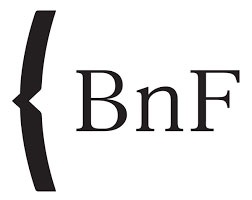Christian de Portzamparc et Philippe Sollers
-
Réalisé par François Pain • Écrit par Hélène Bleskine, François Pain
-
France • 1998 • 63 minutes • Couleur
- Réalisation :
François Pain - Écriture :
Hélène Bleskine, François Pain
- Production (structure) :
INA - Institut National de l'Audiovisuel - Coproduction :
ENSA (École nationale supérieure d'architecture) de Paris-la-Villette , Maison des écrivains - Participation :
Ministère de la Culture et de la Communication. DAPA - Ayant droit :
INA - Institut National de l'Audiovisuel
- N° ISAN :
non renseigné
Résumé
L'architecte Christian de Portzamparc et l'écrivain Philippe Sollers opposent au monde contemporain anesthésié par le savoir rationnel et obsédé par la structure des choses, une pensée complexe et singulière de la ville, apparentée à la vision sensible des poètes. Portzamparc définit "l'âge 3" de la ville contemporaine comme un travail de couture à réaliser sur les décombres d'un espace urbain rassemblant l'héritage de la ville classique et de la ville moderne. Il ne s'agit plus alors de construire "ex nihilo" (l'après-guerre s'en est chargé), mais de modifier, transformer la ville existante : inventer des espaces singuliers pour libérer la ville du poids du territoire, abandonner une architecture qui exprime l'ordre et le pouvoir d'une société autoritaire au profit de l'émotion et de "l'étonnement radical". "Il faut se faire voyant", renchérit Sollers et inviter l'architecture à une "porosité réciproque" avec la peinture ou la poésie. Annick Spay.
To the contemporary world anaesthetised by rational knowledge and obsessed with the structure of things, the architect Christian de Portzamparc and the writer Philippe Sollers oppose a complex and singular way of thinking about towns, related to the sensitive vision of poets. Portzamparc defines the "age 3" of the contemporary town as a sewing job to be done on the ruins of an urban space that brings together the heritage of the classical town and the modern town. It is no longer a case of building "ex nihilo" (the post-war period did that), but of modifying, transforming the existing town : inventing curious spaces to free the town from the weight of the territory, abandoning an architecture which expresses the order and power of an authoritarian society in favour of emotion and "radical astonishment". "We have to be clairvoyants", Sollers proposes, and invite architecture to a "reciprocal porosity" with painting or poetry. Annick Spay.
Mot(s)-clé(s) thématique(s)
Comment avoir accès au film ?
-
Édition DVD
- Il n'existe pas d'édition DVD à notre connaissance
-
Accès VOD
- Il n'existe pas d'accès en VOD à notre connaissance
- Diffusion non commerciale / Consultation
